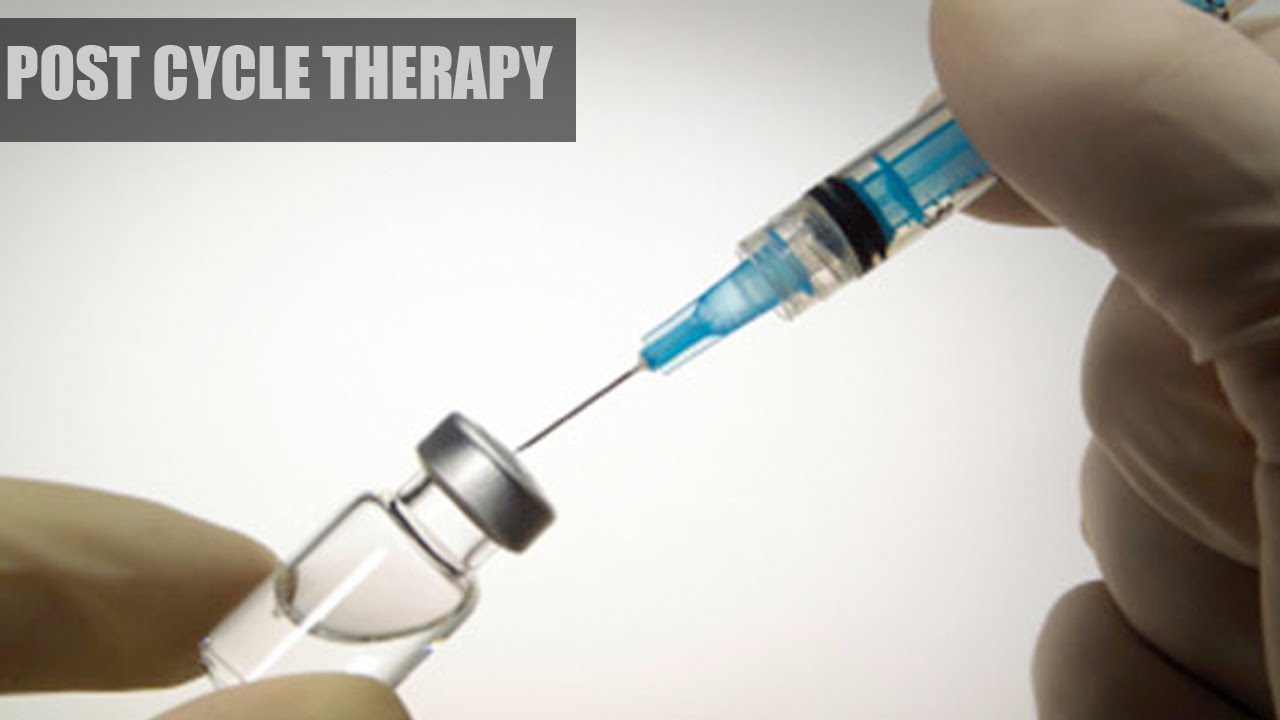Ostarine (MK-2866) Dosage: A Comprehensive Guide with Before and After Pictures

Enobosarm, or Ostarine (MK-2866), is part of a class of drugs known as selective androgen receptor modulators (SARMs). It has been engineered to mirror the muscle-building capabilities of steroids with a diminished risk of severe side effects, making it potentially a safer alternative treatment option. SARMs like Ostarine aim to increase treatment effectiveness for conditions such as cachexia, osteoporosis, and anemia.
GTX, Inc., an American biotech company, initiated the development of Ostarine in 2001 and has since examined its effectiveness through various clinical trial phases. Despite achieving muscle growth (muscle hypertrophy), Ostarine did not meet targeted expectations in improving muscular strength in breast cancer patients affected by cachexia in two phase III trials, leading GTX to discontinue its pursuit of Ostarine for cachexia. The company, however, is realigning its focus to enhance MK-2866 for future success.

Currently unapproved by the FDA for human use, Ostarine is illegal to acquire for aesthetic purposes and is prohibited in professional sports by organizations such as the World Anti-Doping Agency (WADA). Classified for research use only, Ostarine has prompted manufacturers to adjust their marketing by promoting these substances as research chemicals rather than dietary supplements, navigating through the gray area of legal constraints.
Ostarine (Mk-2866) Advantages
Muscle Size and Strength

Ostarine engages the AR (androgen receptor) akin to anabolic steroids, fostering growth in muscle and bone strength. It also activates satellite cell cycle, integrating with muscle fibers and boosting the muscle’s myonuclei count. Notably, Ostarine (MK-2866) selectively targets tissues, potentially enhancing lean muscle mass without triggering the androgenic undesired effects, such as benign prostatic hyperplasia (BPH).
A study with older adults indicated a 3% increase in lean body mass after consuming 3 mg/day of Ostarine for 12 weeks, equivalent to a 2.4kg (5.3 lb) muscle gain in an 80kg (176lb) individual. Even at such a low dosage, the gains are considerable, especially when compared to the larger doses often taken by weightlifters to alter body composition.
Participants, including the elderly, also reported significant strength improvements, adding 22 pounds to their bench press after the study period.
No Virilization in Women
Ostarine has shown safety against the risk of virilization—that is, the development of male characteristics—in women. The aforementioned study also indicated no masculinizing effects in older females.
Fat Loss

Proven effective for cutting, Ostarine ups insulin sensitivity, supporting both subcutaneous and visceral fat reduction—a contrast to several anabolic steroids which may cause an increase in visceral fat, potentially leading to an enlarged waistline. Remarkably, Ostarine targets fat loss more uniformly, notably slimming the midsection.
It also boosts metabolism, aiding calorie burn even at rest, which might help users maintain a calorie deficit, directly and indirectly supporting fat reduction. Among older users, a 0.6kg (1.3 lb) reduction in fat mass was observed, with potentially greater fat loss being reported by younger individuals incorporating regular exercise alongside Ostarine use.
Ostarine Unwanted Effects
While Ostarine avoids causing prostate enlargement, it does mimic a few steroid-related side effects.
Testosterone Suppression

Minimal changes were observed in testosterone levels among elderly male participants consuming 3 mg/day of Ostarine for 12 weeks. In contrast, male patients using larger Ostarine doses reported maintained sexual function and normal testicular dimensions with 25 mg/day over a 6-week period.
Nevertheless, Sex Hormone-Binding Globulin (SHBG) assessments suggest that Ostarine may provoke a drop in testosterone post-therapy. One patient, after an 8-week course at 20 mg/day, showed testosterone levels at 148 ng/dL, below the typical range of 264–916 ng/dL for his age group.
Thus, according to research and anecdotal reports, it appears that Ostarine may not significantly impact testosterone levels when administered in modest dosages.While larger doses may lead to notable suppression, this effect isn’t always immediately apparent to those consuming the substance, and could vary from person to person.
Liver Toxicity

Research in older adults showed a rise in liver enzymes AST/ALT to above-normal in 20% of subjects, indicating the potential for liver damage from ostarine. Although the enzyme levels didn’t reach extremely high levels, it’s important to recognize that study participants were on lower doses than what is typically used by those in fitness circles to enhance their physique.
The liver toxicity observed with ostarine could stem from its oral administration, requiring the liver to process the drug, thereby increasing the organ’s workload and potentially leading to inflammation.
Comparatively, other SARMs like LGD-4033 (ligandrol) and RAD-140 (testolone) have been linked to possible hepatocellular-cholestatic liver damage (4).
Cholesterol Issues
Taking ostarine at a dose of 3 mg/day for 12 weeks led to a 27% reduction in HDL (beneficial cholesterol), which is concerning even at such a small dosage. Consequently, ostarine may increase the risk of myocardial infarction (heart attack) over short or long-term use, even in low doses.
The oral consumption of ostarine and other SARMs is thought to influence cholesterol balance by activating the enzyme hepatic lipase in the liver, known to reduce HDL and contribute to arterial plaque buildup.
Gynecomastia and Water Retention

SARMs could raise estrogen levels indirectly by binding to androgen receptors, thus freeing up testosterone to convert to estrogen.
Patients have reported issues like bloating and gynecomastia with SARM use, albeit without the aromatase enzyme typically involved in estrogen conversion.
Nevertheless, ostarine users tend to experience little water retention, showcasing a more defined physique. Ostarine also seems to demonstrate a negligible impact on insulin sensitivity, suggesting a lower risk of developing gynecomastia.
In one instance, a user’s estradiol levels were tested after ostarine use (5) and were found to be normal at 17.4 pg/mL (within the average range of 7.6-42.6 pg/mL).
Hair Loss

Patients have reported hair thinning or loss while using SARMs, including ostarine (MK-2866) , although these compounds lack the 5-alpha reductase enzyme associated with hair loss.
This can be attributed to increased DHT (dihydrotestosterone) levels, as ostarine’s affinity for androgen receptors allows for more free testosterone, which can convert to DHT.
While hair loss is less common than with anabolic steroids, the chance of experiencing androgenic alopecia while taking ostarine (MK-2866) or other SARMs remains a possibility.
Ostarine (Mk-2866) Results (Before and After Pictures)

One individual, following 20 mg/day of ostarine for 45 days and consistent weight training, shed 3kg (7 lbs), yet appeared more muscular due to enhanced muscle definition. This suggests that weight alone may not fully represent the gains from ostarine, highlighting the importance of before and after images for tracking progress.
Note: These results are considered better than average. The user’s increase in exercise frequency likely contributed to the observed muscle gain and fat loss.
Ostarine Before and After #2

A user shed 13 pounds over a 6-week period on ostarine (MK-2866) , progressing from 12.5 mg/day to 25 mg/day.
He noticed no side effects but saw considerable fat loss and improved muscle fullness and vascularity.
Note: A caloric deficit may have also played a role in his fat reduction during the cycle.
According to him, ostarine (MK-2866) didn’t enhance muscle mass but may have helped in preserving it during his caloric deficit. His strength levels remained stable throughout the cycle.
Ostarine Before and After #3

Another user reported a loss of 23 pounds after an 8-week cycle on 20 mg/day of ostarine (MK-2866) .
A diet with a calorie deficit contributed significantly to the fat reduction, without an apparent increase in muscle mass, yet with a noticeable improvement in muscle definition.
His strength remained constant, and he attributes to ostarine (MK-2866) the maintenance of his muscle size and strength during calorie restriction (1800 calories/day).
Regarding side effects, his post-cycle liver enzyme test revealed that his ALT level was elevated at 57 IU/L (about 30% above the average maximum).Despite being diagnosed with hypogonadism and qualifying for testosterone replacement therapy, his testosterone levels remained deficient. He experienced a substantial dip in energy and general well-being following his cycle, despite the absence of an elevated sensation during the cycle.
The performance of ostarine (MK-2866) can be likened to that of a mild Anavar or Winstrol cycle, offering a harmonious balance of muscle gains and fat reduction, along with comparable side effects.
Recommended Ostarine Intake
Without FDA approval, there are no official dosing recommendations for ostarine. Nevertheless, clinical trials have employed doses of 3mg, 9mg, and 18mg per day with some success.

For body composition improvements, a common intake range is between 10–30 mg per day.
Typically, women opt for the lower end of this spectrum to circumvent the risk of virilization, usually around 10 mg per day.
It’s hypothesized that increased doses of ostarine (MK-2866) may help more with muscle growth, aligning with a lean mass gaining phase, whereas smaller doses may aid more in fat loss, aligning with a cutting phase.
Yet, it should be noted that higher ostarine (MK-2866) doses may also intensify adverse effects, especially pertaining to cholesterol and liver enzymes.
Standard Ostarine Usage Cycle

A frequently followed ostarine cycle, aimed at fat reduction and retention of muscle mass, includes:
- A daily dose of 20mg of ostarine for a duration of 8 weeks.
Note: This particular cycle is more typically followed by men, while women may choose a daily dose of 10 mg for a period of 4–8 weeks.
Some may choose to extend ostarine cycles up to 12 weeks, but this is only advisable if there is no significant deterioration in cholesterol, liver, and testosterone levels after the initial 8 weeks.
It is possible to use ostarine in conjunction with other SARMs, but this may lead to additional increases in blood pressure and liver enzyme levels and is generally not recommended.
Combining Ostarine with Cardarine
Users looking to heighten fat loss results might stack ostarine (MK-2866) with cardarine (GW501516), especially for its potential benefits in cutting phases.

Unlike SARMs, cardarine is a PPARD receptor agonist, known for its potential therapeutic effects on insulin sensitivity and fat metabolism, which could be beneficial in treating obesity.
Studies, including those on animals and humans, have shown cardarine’s efficacy in reducing body fat.
Dosage Cycle for Ostarine with Cardarine
- Ostarine: A daily intake of 20mg over 8 weeks.
- Cardarine: A daily intake of 20mg over 8 weeks.
Lipid profile assessments suggest that cardarine may possess cardioprotective attributes, such as the elevation of HDL cholesterol, which could mitigate blood pressure spikes associated with ostarine.
However, Dr. Grant Fourie has noted potential hepatoxicity from cardarine, observing liver stress similar to that of consuming 50mg/day of Anavar after reviewing over 2,000 patient labs who used SARMs. Hence, using cardarine in combination with ostarine might worsen liver stress.
Since cardarine is relatively new and considered a research chemical, its long-term side effects are not fully comprehended.
Despite criticism from the fitness community regarding overdosage in studies, even low doses of cardarine have shown carcinogenic tendencies in prolonged animal research. This casts doubts on cardarine’s safety, leading to its discontinuation in the medical development process in 2009.
Administering Ostarine

Ostarine is typically found as an oral solution with a concentration of 25 mg/mL, intended for oral ingestion.
Prior to consumption, users can measure their dose with a dropper or syringe, then take the liquid orally.
An alternate method is sublingual administration; this involves placing the liquid beneath the tongue for 10–15 seconds before swallowing, allowing it to engage with the mucous membrane and providing a quicker and more direct entry into the bloodstream.
This method also reduces presystemic metabolism, leading to greater bioavailability of ostarine.
Ostarine might also come in capsule form, commonly holding 10mg of ostarine per capsule.
Post-Cycle Therapy for Ostarine (PCT)

Owing to its milder nature, ostarine is less likely to completely suppress the HPTA. Nevertheless, users might still experience significant testosterone suppression, making PCT a consideration depending on symptoms and the degree of hypogonadism.Individuals who discover their testosterone levels are below average but do not observe any negative impacts on their overall health, energy, testicular volume, or sexual drive might not need to employ post-cycle therapy (PCT).
Typically, it is observed that their body’s own testosterone production might take several weeks to rebound to its former levels.
Should individuals notice a decline in energy or a decrease in sexual well-being after their cycle, they could opt to administer clomid for PCT. In contrast with Nolvadex, which is usually reserved for stronger selective androgen receptor modulators (SARMs) or anabolic steroids, clomid is considered a gentler option.
Clomid aids in hastening the restoration of the hypothalamic-pituitary-gonadal axis (HPTA), thereby reducing the duration individuals suffer from symptoms of low testosterone (11).
For PCT, clomid is often recommended to be taken for 30 days at a dosage of 25 mg/day.
Commencement of a PCT for ostarine should occur 3–4 days following the last administration, factoring in its half-life of 14–16 hours, which allows it to be completely out of the system. The clearance time is calculated as 5.5 times the half-life.
Summary

Ostarine (MK-2866) has been recognized for its substantial influence on fat reduction, attributed to its favorable action on insulin sensitivity and activation of the androgen receptor.
The expected muscle gains from ostarine are considered mild and should not be compared to the more robust effects of SARMs like LGD-4033 or RAD-140.
The potential adverse effects of SARMs are frequently downplayed, and even those considered less potent, such as ostarine, may pose a threat to cardiovascular and hepatic health. There’s also a strong possibility of experiencing testosterone suppression, which can lead to temporary hypogonadism.
On the other hand, anavar, a steroid taken orally, may be deemed less hazardous than ostarine, possessing decades of clinical research to back its safety profile. Anavar is associated with side effects akin to ostarine, including changes in cholesterol levels, elevated liver enzymes, and testosterone suppression, but these effects are generally not seen as troublesome. This is evidenced by anavar’s FDA-approved use in medicine.
Therefore, when weighing the risks against the benefits, anavar seems to offer a more favorable balance, especially considering its superior performance in facilitating fat loss, strength increase, and muscle development.
REFERENECES
(1) https://ascopubs.org/doi/abs/10.1200/jco.2007.25.18_suppl.9119
(3) https://www.reddit.com/r/sarmssourcetalk/comments/eh8p1m/lab_results_from_20mgday_ostarine_8_weeks/
(4) https://aasldpubs.onlinelibrary.wiley.com/doi/full/10.1002/hep4.1456
(5) https://i.redd.it/kplxm9xsyl741.jpg
(6) https://www.reddit.com/r/sarmsourcetalk/comments/i4fsob/meta_hair_loss_on_ostarine/
(7) https://www.ncbi.nlm.nih.gov/labs/pmc/articles/PMC4421799/
